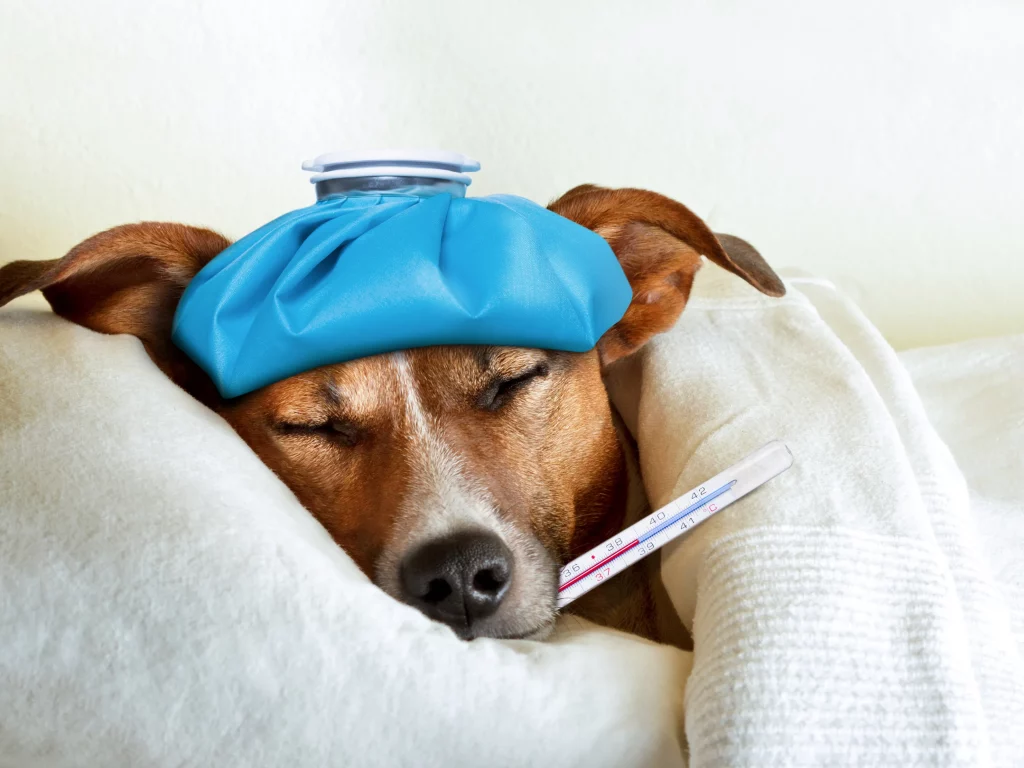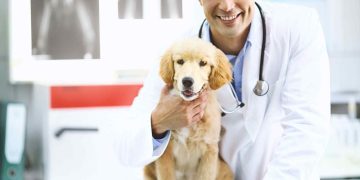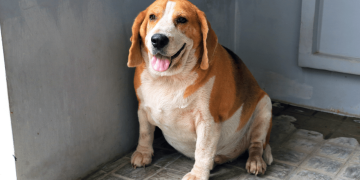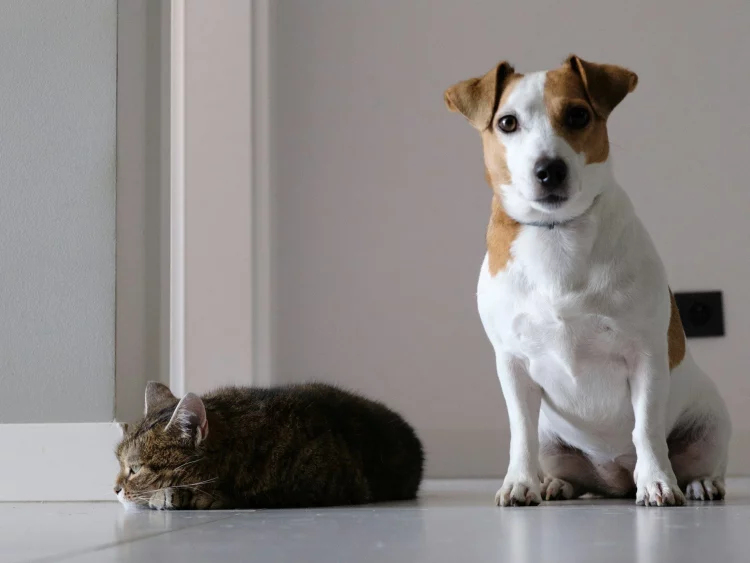As pet owners, one of our primary responsibilities is to keep our furry friends healthy and happy. However, because pets cannot verbalize their discomfort or symptoms, it can be difficult to recognize when they’re unwell. By the time many pet owners notice something is wrong, the illness may have progressed to a more severe stage. This makes it crucial to be vigilant and aware of the early signs of illness in your pet. Recognizing these signs early can help you address potential health problems before they become serious, leading to better treatment outcomes and a higher quality of life for your pet.
In this article, we’ll discuss the key symptoms that should prompt a visit to the vet, common health problems in pets and their early warning signs, and preventive measures you can take to catch illnesses early.
Key Symptoms That Should Prompt a Visit to the Vet
Pets, whether they are dogs, cats, or other animals, exhibit some telltale signs when they are feeling unwell. These signs can be subtle at first but are worth noticing as they could indicate a developing problem. Knowing when to seek professional veterinary care can help prevent complications and ensure that your pet remains healthy.
1. Changes in Appetite or Drinking Habits
A sudden change in your pet’s eating or drinking habits can be a red flag. If your pet starts eating less or refuses to eat altogether, it could be a sign of an underlying issue. Conversely, an increased appetite could point to conditions like diabetes or thyroid problems. Similarly, excessive drinking, or a sudden decrease in water intake, can indicate issues with your pet’s kidneys, urinary tract, or diabetes.
When to visit the vet:
- Loss of appetite lasting more than 24 hours
- Increased or decreased thirst over a few days
- Significant weight loss or weight gain without a change in diet
2. Changes in Behavior or Personality
Pets are creatures of habit, and any sudden change in their behavior or personality could be a sign of illness. If your pet becomes unusually lethargic, withdrawn, or irritable, it may be experiencing pain, discomfort, or stress. On the other hand, if your pet suddenly becomes excessively hyperactive or agitated, it may also be a sign of an underlying issue.
When to visit the vet:
- Sudden lethargy or lack of interest in normal activities
- Increased aggression or anxiety
- Excessive vocalization or uncharacteristic behavior
3. Vomiting or Diarrhea
Occasional vomiting or diarrhea may not always be a cause for concern, as it can sometimes result from eating something they shouldn’t have. However, persistent vomiting or diarrhea, or if it occurs frequently over the course of a few days, could indicate an infection, gastrointestinal problem, or more serious health condition.
When to visit the vet:
- Vomiting or diarrhea lasting more than 24 hours
- Blood in vomit or stool
- Severe lethargy or dehydration
4. Changes in Urination or Defecation
Changes in your pet’s bathroom habits can be an early warning sign of various health issues. This includes difficulty urinating, accidents in the house, or changes in the frequency of urination or defecation. Cats may urinate outside the litter box, and dogs may have accidents indoors despite being house-trained. These changes can point to conditions like urinary tract infections (UTIs), kidney disease, diabetes, or gastrointestinal problems.
When to visit the vet:
- Frequent urination or accidents indoors
- Difficulty or pain while urinating
- Changes in stool consistency or frequency, such as straining or diarrhea
5. Unexplained Weight Loss or Weight Gain
Sudden weight changes are often one of the most noticeable signs that something is wrong. Rapid weight loss or weight gain can be linked to several health conditions. Weight loss could indicate digestive issues, metabolic disorders, or even cancer, while excessive weight gain may be linked to obesity, thyroid problems, or fluid retention.
When to visit the vet:
- Weight loss without a change in diet or exercise routine
- Unexplained weight gain, especially if it’s rapid
- Loss of muscle mass or noticeable fat accumulation
6. Coughing, Sneezing, or Difficulty Breathing
If your pet starts coughing, sneezing, or shows signs of respiratory distress, it’s essential to get them checked out as soon as possible. Respiratory symptoms can indicate respiratory infections, asthma, allergies, or even heart disease. In severe cases, difficulty breathing may point to issues like heart failure or lung disease, which require immediate attention.
When to visit the vet:
- Persistent coughing or sneezing
- Wheezing or labored breathing
- Discharge from the nose or mouth
- Gagging or choking
7. Skin or Coat Problems
A sudden change in your pet’s coat or skin can be a sign of various health problems. Skin issues such as redness, hair loss, excessive scratching, or scabs can be caused by allergies, parasites, infections, or even systemic diseases. A dull or patchy coat can also indicate nutritional deficiencies or underlying health issues.
When to visit the vet:
- Excessive scratching, licking, or biting at certain spots
- Red, inflamed, or sore patches on the skin
- Noticeable hair loss or thinning of the coat
- Skin infections or unusual odors
8. Swelling, Lumps, or Bumps
Finding a lump or bump on your pet’s body can be concerning. While some lumps are benign, others could indicate tumors or cysts. If you find a new lump, especially one that changes in size or shape, it’s important to have it checked by a veterinarian to rule out cancer or other serious conditions.
When to visit the vet:
- New lump or bump that grows or changes in appearance
- Hard or painful lumps
- Lumps near vital organs or areas of movement

9. Pain or Sensitivity to Touch
If your pet seems to be in pain, whether due to a specific injury or without clear cause, it’s essential to investigate further. Pets may show signs of discomfort by limping, whining, growling, or avoiding certain movements. This could indicate an injury, arthritis, dental issues, or a more serious underlying condition.
When to visit the vet:
- Limping or reluctance to move
- Excessive whining or growling when touched
- Changes in posture or difficulty sitting, lying down, or getting up
10. Changes in Eye or Ear Appearance
Changes in the eyes or ears of your pet can be a sign of an infection or other health problem. Redness, excessive tearing, cloudiness, or discharge from the eyes could indicate an eye infection, while ear discharge, odor, or frequent scratching could point to ear infections or ear mites.
When to visit the vet:
- Red or cloudy eyes with discharge
- Excessive tearing or squinting
- Odor or discharge from the ears
- Scratching or pawing at ears
Common Health Problems in Pets and Their Early Warning Signs
1. Arthritis
Arthritis is common in older pets, and its early symptoms can be subtle. Pets may become less active, show reluctance to jump or climb stairs, or exhibit stiffness after resting.
Early signs:
- Difficulty walking or climbing
- Limping or favoring a limb
- Decreased activity levels
2. Diabetes
Diabetes is a serious condition in both dogs and cats. Symptoms can be mistaken for other health issues, but early detection is key to managing the disease effectively.
Early signs:
- Increased thirst and urination
- Weight loss despite normal appetite
- Lethargy or weakness
3. Kidney Disease
Kidney disease is often diagnosed in older pets, especially cats. Early symptoms can be easily overlooked, so it’s important to stay vigilant.
Early signs:
- Increased drinking and urination
- Dehydration or poor coat condition
- Decreased appetite or weight loss
4. Urinary Tract Infections (UTIs)
UTIs are common in both dogs and cats, particularly females. They can cause painful urination and potentially lead to kidney damage if left untreated.
Early signs:
- Frequent urination or accidents in the house
- Painful urination or straining
- Blood in the urine
5. Heart Disease
Heart disease can develop over time, and pets may not show symptoms until it has progressed. Early signs include coughing, difficulty breathing, and changes in behavior.
Early signs:
- Coughing, especially at night or after exercise
- Rapid breathing or labored breathing
- Reduced stamina or exercise intolerance
Preventive Measures to Catch Illnesses Early
The best way to catch illnesses early is through routine preventive care and vigilance in monitoring your pet’s behavior and physical changes. Here are some essential preventive measures:
1. Regular Veterinary Checkups
Annual or bi-annual visits to the vet are essential for catching potential health problems before they become severe. A vet can perform routine screenings, blood tests, and physical exams to detect early signs of illness.
2. Keep Track of Changes
Keep a pet journal to track changes in behavior, eating habits, activity levels, and other factors. This can help you notice patterns and identify when something seems off.
3. Maintain a Healthy Diet and Exercise Regimen
Providing your pet with a balanced diet and regular exercise is key to maintaining their overall health. Regular activity helps with weight management and reduces the risk of obesity-related diseases.
4. Monitor for Symptoms Regularly
Make it a habit to check your pet’s skin, ears, and eyes regularly for any unusual changes. Additionally, observe their bathroom habits and note any differences.
Being proactive about looking for signs can help you catch illnesses early.
5. Be Proactive with Vaccinations and Parasite Control
Regular vaccinations and preventive treatments for fleas, ticks, and other parasites can protect your pet from a range of diseases. These routine treatments reduce the chances of your pet contracting avoidable illnesses.
Conclusion
Being aware of the early signs of illness in your pet is crucial for their long-term health and well-being. While some symptoms may seem minor, they can often signal underlying health problems that require attention. Regular checkups with the vet, careful monitoring of behavior and physical changes, and proactive preventive measures are the best ways to catch health issues early and give your pet the best chance for a healthy life.
By staying informed and vigilant, you can ensure that your furry companion lives a long, happy, and healthy life.























































